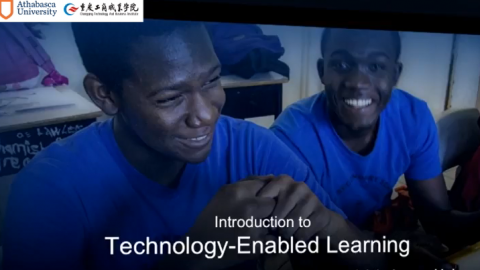Cognitive and behaviourist (CB) pedagogies focus on the way in which learning was predominantly defined, practiced, and researched in the latter half of the 20th century. Behavioural learning theory begins with notions of learning which are generally defined as new behaviours or changes in
behaviours that are acquired as the result of an individual's response to stimuli. Note in this definition the focus on the individual and the necessity for measuring actual behaviours and not attitudes or capacities. Major behaviourist learning theorists include American psychologists Edward Watson, John Thordike, and B.F. Skinner. These theoretical ideas led
directly to instructional designs and interventions such as the Keller Plan
(Keller & Sherman, 1974), computer一assisted instruction, and instructional systems designs. For example, Gagne 's (1965) events of instruction proceed through linear and structured phases, including to
1. gain learners attention,
2. inform learner of objectives,
3. stimulate recall of previous information,
4. present stimulus material,
5. provide learner guidance,
6. elicit performance,
7. provide feedback,
8. assess performance,
9. enhance transfer opportunities.
While there is a tradition of cognitive constructivist thinking that hinges on
personal construction of knowledge, largely developed by Piaget and his followers (Piaget, 1970), the rools of the constructivist model most commonly applied today spring from the work af Vygolsky and Dewey, generally lumped together in the broad category of social construetivism.
Social一constructivist pedagoagies, perhaps not coincidently, developed in conjunction with the development of two一way comunication technologies.
At this time, rather than transmiting information, technology became
widely used to create pportunities for both synchronous and asynchronous
interactions between and among students and teachers. Michael Moore's famous theory of transactional distance (1989) noled the capacity far flexible interation to substitutle for structure in distance education development and delivery models. A number of tesearchers noted the challenges of geting the mix ơf potential interactions right (Anderson, 2003;
Daniel & Marquis, 1988). Social一constructivist pedagogy acknowledges the social nature of knowledge and of its creation in the minds of individual leamers. Teachers do not merely transmit knowledge to be passively
consumed by learners; rather, each learner constructs means by which new knowledge is both created and integraled with existing knowledge.
Although there are many types of social constructivism (see Kanuka &
Anderson, 1999), all the models have more or less common themnes, including the importance of new knowledge as building upon the foundation of previous leaming,
context in shaping leamers' knowledge development, learning an active ralber than passive process, language and olher social tools in canstructing knowledge,
metacognition and evaluation means to develop leamers' capacity to 188088 their own leaming, learning environment learner centred and stressing the importance
of multiple perspectives, knowledge needing to be subject to social discussion, validation, and
application in real world contexts (rom Honebein, 1996; Jonassen,
1991; Kanuka & Anderson, 1999).
The third generation of distance一education pedagogy emerged recently and is known as connectivism. Canadians George Siemens (Siemens, 2005a, 2005b, 2007) and Stephen Downes (2007) have written defining
connectivist papers, arguing that learning is the process of building networks of information, contacts, and resources that are applied to real problems.
Connectivism was developed in the information age of a networked era (Castells, 1996) and assumes ubiquitous access to networked technologies.
Connectivist learning focuses on building and maintaining networked connections that are current and flexible enough to be applied to existing and emergent problems. Connectivism also assumes that information is plentiful and that the learner' 's role is not to memorize or even understand everything, but to have the capacity to find and apply knowledge when and where it is needed. Connectivism assumes that much mental processing and problem solving can and should be off一loaded to machines, leading to Siemens' (2005) contentious claim that learning may reside in non一human appliance." Thus, connectivism places itself within the context of actor一 network theory with its identification of the indiscriminate and overlapping boundaries between physical objects, social conventions, and hybrid instantiations of both, as defined by their initial and evolved application in real life (Latour, 1993).

